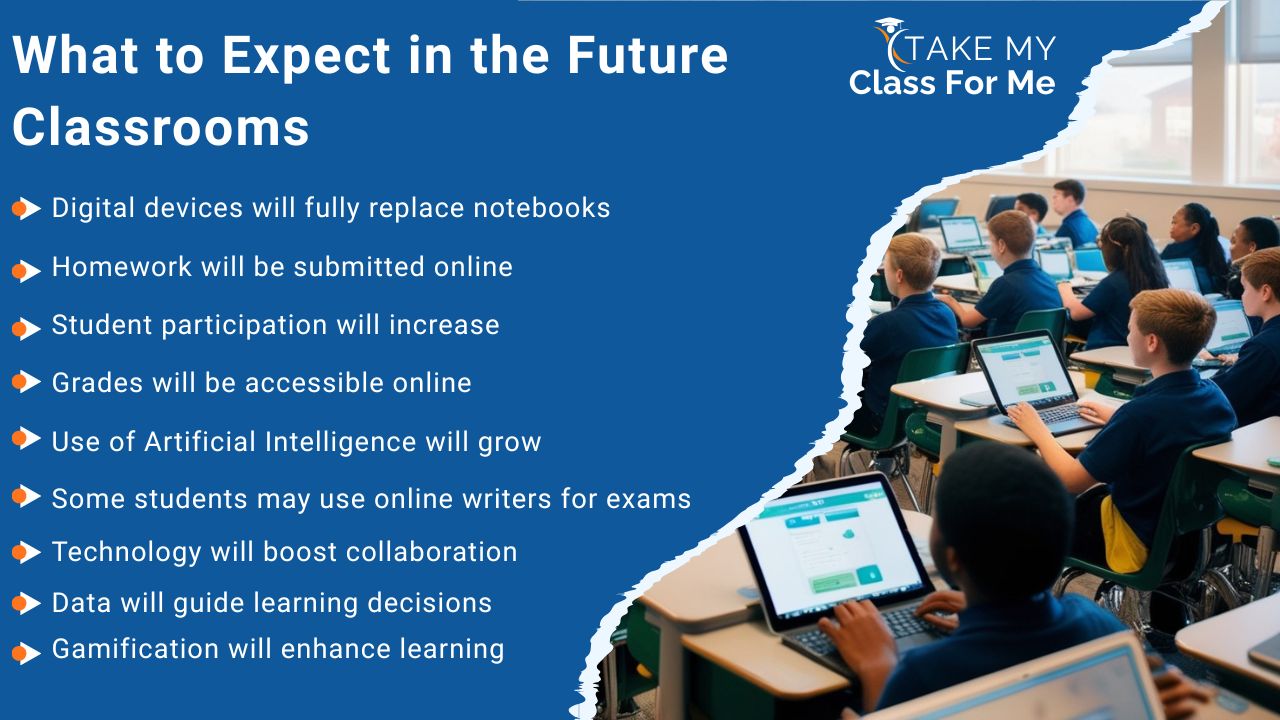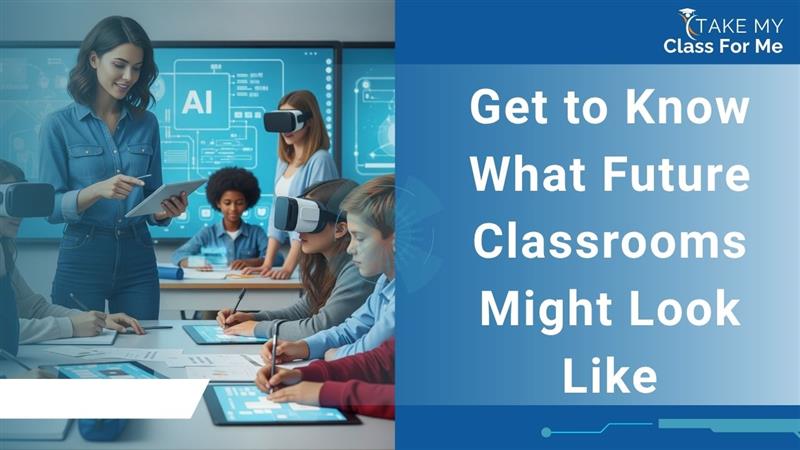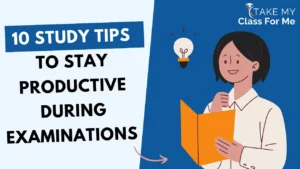Future classrooms will be tech-driven, flexible, and personalized. With AI, virtual reality, digital tools, and global connectivity, learning will be more engaging and accessible. These changes will support different learning styles, boost student participation, and better prepare learners for real-world challenges in a digital age.
In recent years, technology has changed almost every industry, and its impact has mostly been positive. One of the areas where it has made a big difference is education. Just five to seven years ago, no one could have imagined how much the education system would change. But currently, teaching and learning have improved in many ways. Classrooms have now become fully online platforms. So, students mostly rely on important learning tools such as tablets, smartphones, and laptops. This makes us think about how education will change in the future and how teachers and students will connect in the classrooms of tomorrow. While we may not know exactly what is ahead, emerging trends and technologies give an idea of how teaching and learning might evolve.
If you are curious to know about the future of classrooms, read this blog. Here, we have listed the changes we can expect in the futuristic classroom and their benefits.
What Will the Classroom of the Future Look Like?
The future classroom is already starting to take shape with some new changes. Assignments and grades are now posted online for easy access. Students use collaboration software to work together on group projects. Homework is completed and submitted through online classroom portals. Instead of using paper or flash drives, students store their work in the cloud. Schools also use special social media platforms to help teachers, parents, students, and administrators communicate more easily.
What to Expect in the Future Classrooms

Future students may not fully appreciate the benefits of learning in a traditional classroom because they will find online learning more flexible. Some people will say that online learning makes studying easier. Here, let us take a look at the changes we can expect in the futuristic classrooms
Digital devices will fully replace notebooks
Laptops and tablets are already being used in many classrooms and will likely replace notebooks and textbooks completely in the near future. Students enjoy learning with digital devices because they can easily access information online and use different tools to help them study. Technology also helps students to stay focused and understand their lessons better. Mainly, because of these benefits, this change is expected to happen in classrooms all around the world soon.
Homework will be submitted online
In the past, students had to hand in homework and projects on paper, which was often stressful. But in the future, students will do all their work online and won’t need pens or paper. They will complete assignments on computers and submit them through websites like Canvas and Blackboard. If this change happens, many students will get online academic help to manage busy schedules with jobs, internships, and classes. If you are struggling to keep up, you might even consider using ‘pay someone to do my online class’ services for expert support. These services will help reduce stress and keep students on track in the digital learning world.
Student participation will increase
Apps like Padlet, Socrative, and Today’s Meet may help students take part more in class by letting them share ideas, ask questions, and join discussions without speaking out loud. When teachers use online platforms, students will also get more one-on-one time with them.
Grades will be accessible online
A big change coming with technology is that grades will be posted online. Some students try to hide their bad grades from parents and classmates, but online grades will make it harder to do that. Students will be able to see their own progress more clearly. In the future, parents will also be able to check their children’s grades online, so both teachers and parents can stay involved in the student’s learning.
Use of Artificial Intelligence will grow
Artificial intelligence (AI) can change education by offering a personalized learning experience for each student. It looks at a lot of data to understand what a student needs and gives them lessons and exercises that fit their strengths and weaknesses. This will help students learn at their own speed. AI will also help teachers by handling tasks like scheduling, taking attendance, and grading assignments. Overall, this will give teachers more time to focus on helping students and making learning more interesting.
Technology will boost collaboration
Collaboration is an important part of today’s education, and technology makes it easier. Recently, platforms like Microsoft Teams and Google Classroom have been helping students and teachers work together, share materials, and talk with each other in real time. In the future, classrooms will use virtual and augmented reality to create exciting learning experiences.
Some students may use online writers for exams
Not all students enjoy writing, and many are better at things like audio production, art, or singing. Luckily, technology lets students complete their schoolwork in ways that match their strengths. For example, taking exams online is now common in modern classrooms. If students need help, they can even find services by searching “pay someone to take my online exam” to get support and do well in their tests.
Data will guide learning decisions
One of the biggest benefits of modern technology in education is the ability to collect and study data. This information will help teachers understand how well students are doing and how involved they are in class. Moreover, by using this data, teachers can make better decisions about how to help each student. For example, if a student is struggling with a topic, the teacher can provide extra resources and support just for them. This will make learning more personal and effective for every student.
Gamification will enhance learning
Gamification is a smart approach now used in education, where students learn through games. This method keeps them engaged and motivated by using features like points, badges, and more. Educational platforms like Khan Academy already use this to make learning more fun and effective.
Advantages of a Futuristic Classroom
Futuristic classrooms are designed to be flexible, tech-friendly, and student-centered. They make learning more comfortable, interactive, and connected by using modern tools and smart setups. Here are some key benefits of learning in a futuristic classroom:
- Students can choose comfortable seating like cushions, beanbags, or desks to make learning more relaxed.
- Students can store study materials digitally on their laptops and access them anytime.
- Online platforms allow students to collaborate with peers and teachers globally.
- Modern technology keeps students updated and prepares them for the digital world.
- Parents and teachers can easily stay in touch to support student progress.
Conclusion
The classroom of the future will be a lively, technology-driven space that supports different learning styles and meets each student’s needs. With tools like AI, virtual reality, smart devices, and personalized learning platforms, education will become more interactive, inclusive, and easy to access. As these technologies grow, both students and teachers will enjoy studying. If you still wish to know more about the future of education, send a ‘take my online class for me’ request to us. The education experts from our team will provide visionary insights on the futuristic classroom.





